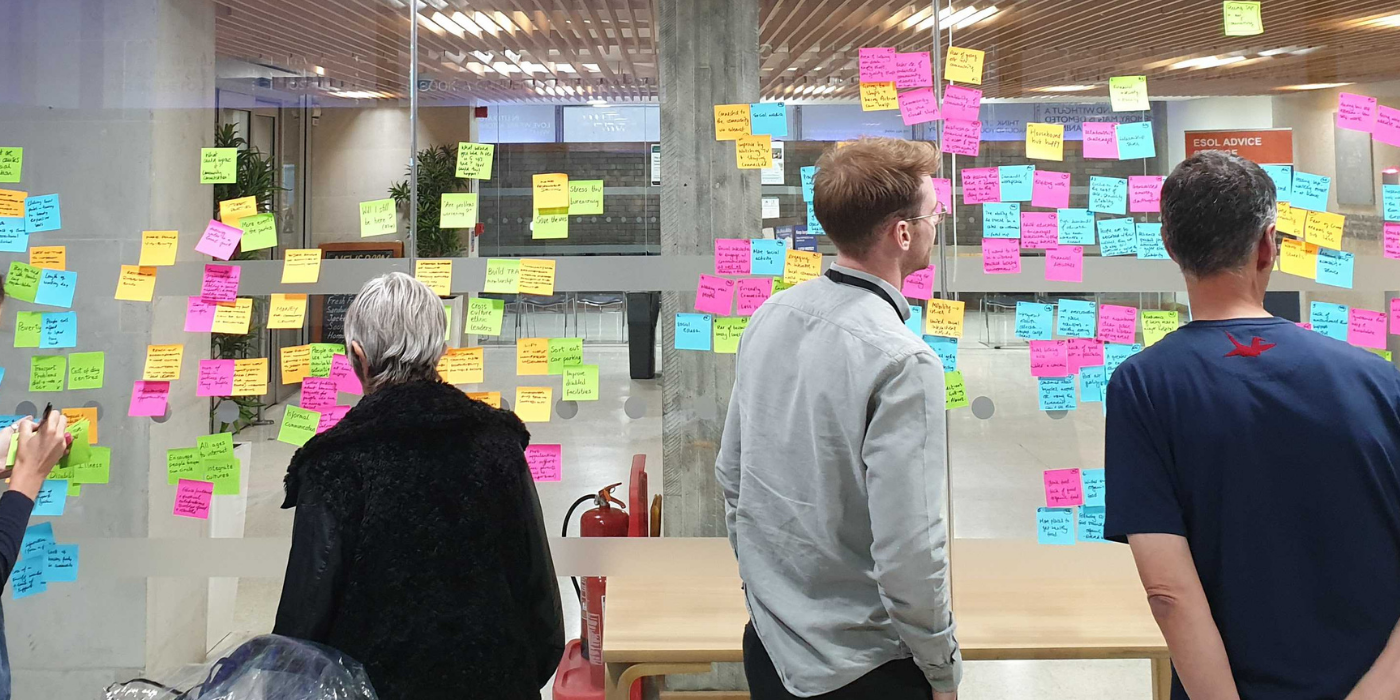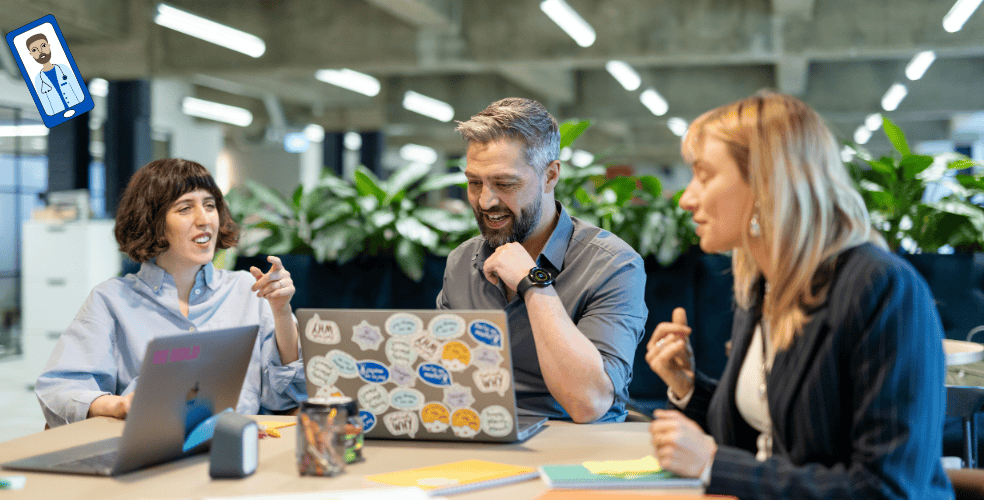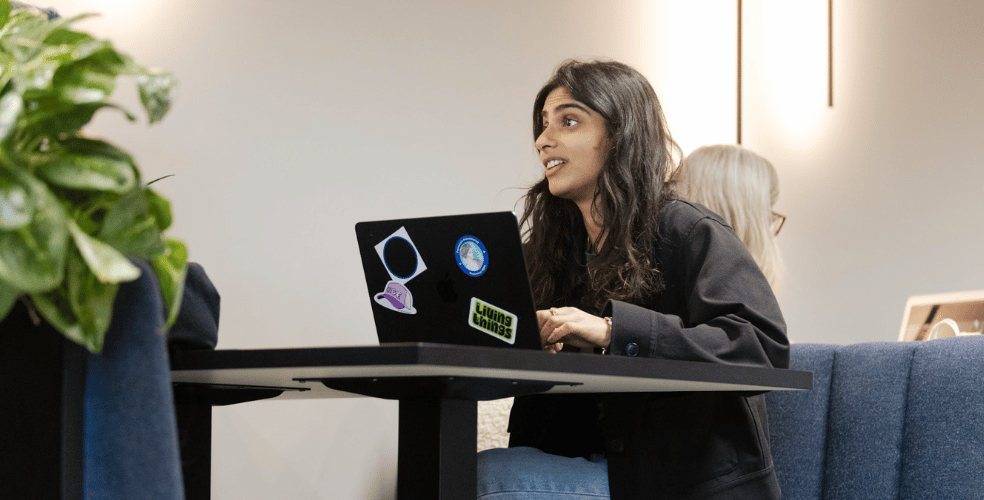Sarah Fox recently shared a post about how we used a strategic service design approach for discovery work in a national health system – looking specifically at a whole system digital solution for sexual health. This was a rapid 7-week timeframe to complete work – which isn’t unusual for this type of work.
In this post I’ll share our approach to user research, working within this timeframe, and managing some of the other research challenges in this type of discovery work.
Planning research to manage time constraints
The biggest challenge our team faced was working with a whole part of a national health system. The natural curiosity of researchers means that when planning work to understand this type and size of problem space, it would have been easy for us to slip into wanting to explore everything.
Since continuing this work beyond a short discovery wasn’t guaranteed we had to be tactical in how we focused our initial efforts.
We knew that we wouldn’t be able to conduct direct research with patients, GPs, and with all the other peripheral parts of the sexual health system such as pathology laboratories or pharmacies. So through early work with the client team and stakeholders, we reached an agreement that the needs of people who provide clinical care (e.g. consultants, nurses) and those who support the delivery of sexual health services (e.g. admin roles, service managers) would be our primary focus. Because we knew a holistic approach was needed when understanding users' needs, we also decided we would learn about the de-prioritised user groups indirectly by using existing research and engaging with those who have direct experience with them. This approach meant we still were able to define a set of pain points and user needs for these groups, where further research could then be conducted in any future phases of the project.
We focused exclusively on our prioritised user groups in their widest sense. This included all the admin and people that keep sexual health services running – what we called the “behind the scenes heroes.” We also prioritised covering all health boards in order to understand overlapping pain points and unmet needs.
I led this work, conducting our main research sessions. This included one-to-one interviews, as well as group sessions where we brought together different members of staff within a single health board.
Working with health systems under pressure
We weren't short of volunteers across health boards to take part in our research. But the people we wanted to interview were time poor and under pressure. Working with clinicians, it was flu season (January) when we were initially trying to recruit for this work. A number of health boards were in the maximum emergency conditions that they could be in during winter which added a layer of complication.
To address these issues, we designed research sessions to be as short as possible – 30 minutes to an hour maximum. We accommodated group research alongside our one-to-one interviews with time slots around clinic times meant we could be as flexible as possible around people’s diaries across all the health boards.
Client support in research recruitment was an important factor considering the short time frame for completing research. The client team led preparation work to line up participants across different health boards. This included work with a representative within the British Association of Sexual Health who was able to support recruitment.
With this support in place, we were able to compress our research activities within the project time frame – from planning, through to research sessions and synthesis. These relationships also fed into the thinking needed around a new system and what it needed to do.
Building trust with research participants
Gathering real-life stories was crucial to this work. To make progress, this required us to build trust with research participants from the very outset, making sure that they were clear what was happening with the data that they were sharing with us.
When running research sessions, the most important consideration was making NHS staff feel safe so that they could be really open with us around any negative impacts that current IT systems, or lack of IT systems, were having. We provided clear reassurance that participation would not have any negative impact on them or their services in any way. We also gave participants the option to participate without needing to record audio or video, so what they shared couldn't be tied to them in any way.
As the lead researcher, I was also able to work in the background to make sure that any of the quotes we were using couldn't be identified in any way, including the challenge of where it might be easier to identify someone if there was one person in that role in that area of the country that uses a particular method of doing something.
Making research a team sport
The way the whole project team was involved in user research helped us to respond to what we were learning fast, while always working within our constraints.
All of our team were involved in note taking and observed research, as well as being involved in analysis and insight generation. This accelerated how quickly research could inform action, as the team didn’t have to wait to respond to what we were learning until the end of the interviews and group sessions.
As research was informing both a ‘to-be’ service blueprint and the writing of a business case, close collaboration between research, service design and content design was also essential here. Without making research a team sport, especially within the time scales we were working in, this wouldn’t have been as effective or possible.
The outputs of our research helped bring real stories in the system to life alongside our service design artefacts. This helped the whole team and stakeholders better understand gaps in knowledge and any associated risks. For example, we identified gaps in knowledge around cyber security, even though this was a high priority outcome. This enabled the team to focus and target research activities further into discovery, being clear with, and addressing gaps.
Evidence and learning that always works within constraints
Reflecting back on what I’ve learned from leading this research: no matter what the constraints, there is always a way to put in place effective and useful research if we are strategic in how we respond. Rather than seeing constraints like time and access to different user groups negatively, we can reframe these challenges as opportunities.
When it comes to user research, this is often the work needed to shift the mindset of a team and stakeholders to what can we do instead of what can’t we do. It means that research is then targeted in the right way, having the most impact and working with, not against, constraints – helping organisations make rapid progress, but while still working with an evidence-based approach.
Working in this way we were able to make rapid progress to support both a business case, and make clear recommendations for how the new service can move forward to an alpha stage.
Our recent design blog posts
Transformation is for everyone. We love sharing our thoughts, approaches, learning and research all gained from the work we do.
-

-

Naming services in complex situations
Read blog post -

Using inclusive research approaches with Blood Cancer UK
Read blog post -

Designing for users who don’t exist (yet)
Read blog post

